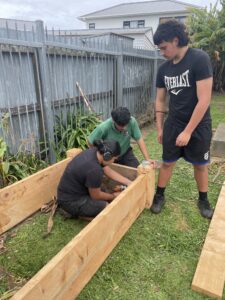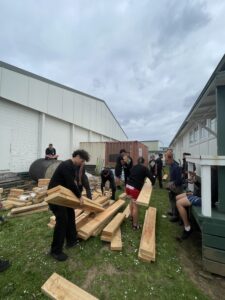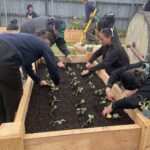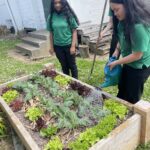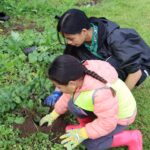Recently Aorere College has looked back on a busy year of growing knowledge and understanding around their place and community. They have considered the values that underpin their mahi, what went well and what the challenges were and are now looking to the future. Freya Bullock of Aorere College shares their story…
With funding received from Auckland Council, the college purchased 4x macrocarpa garden boxes from Mitre 10, plus vegetable seedlings to begin their first crop of planting. With guidance from Pacific Vision Aotearoa, the Year 11 PE classes cleared the area between the Old Gym and TP1 to create space for the māra. This involved cleaning up rubbish, removing unnecessary items (e.g. tyres, bins) which had been dumped there, and clearing weeds.
- Careful teamwork and power tool skills.
- A giant jigsaw puzzle.
Freya Bullock, a teacher at the college, explains the process they have navigated for establishing māra kai, their mahi and next steps.
“As we had aimed for this māra to be constructed through an indigenous lens, Pacific Vision Aotearoa worked with our students to ensure indigenous knowledge was at the forefront of how we planted the garden. This included making use of a banana plant which was already growing in the area, using the leaves as mulch to provide nutrients and moisture to the ground before planting so that the garden boxes would have a healthy foundation.”
- Getting the first crop planted.
- Caring for māra kai.
- Tuākana Tēina
Pacific Vision Aotearoa also taught the Year 11 PE classes about the maramataka, kai sovereignty and kaitiakitanga as a reciprocal relationship with the environment, enabling students to understand their cultural identity within te taiao.
The māra kai project does not stand alone. It is part of an integrated programme of Environmental Education that includes learning in about and for the local waterways.
Over the past 5 years, Aorere College has been on an Enviroschools journey at its local stream, the Waokauri Creek. All 400 Year 9 students visit the stream at least twice a year to investigate and act to make a difference in their local community of Papatoetoe, by doing stream testing, growing and planting natives, releasing weeds and collecting waste that comes down in floods.
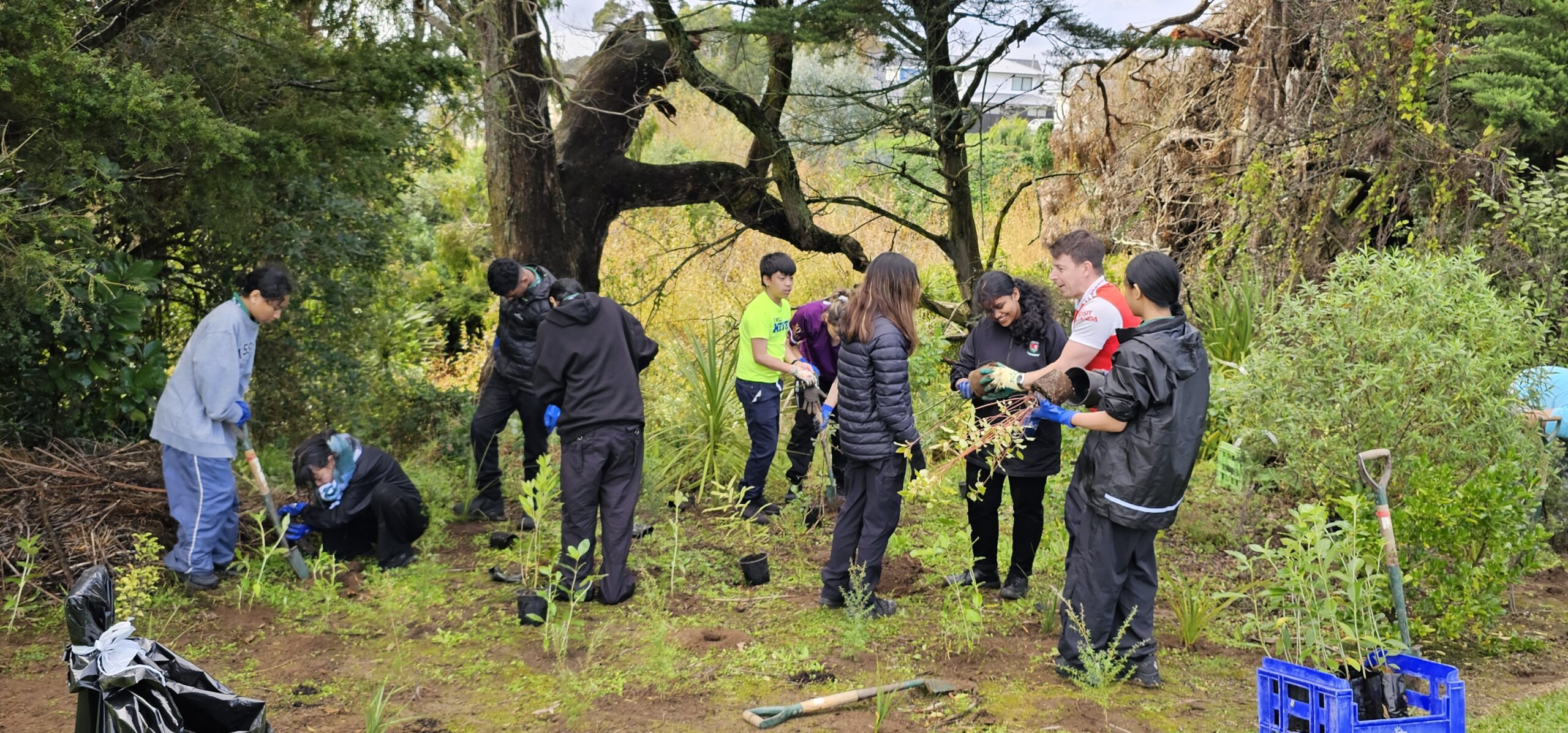
Planting locally sourced and grown plants.
“For me, it’s about showing how small actions by many people can make a big difference to counter apathy and disconnection from the community. It also provides a wonderful opportunity for students to take science skills that they learn in the classroom and use them in the world, to help them realise that they act as scientists all the time. The eDNA sampling is part of this, by making the invisible visible. It was a particular highlight for me when we managed to trap a banded kōkopu in a hīnaki, months after we had the clue that they were living in the Waokauri. Ultimately, I want students to develop a sense of agency – that they have a role in shaping the environment and community around them.” – Aidan Kiely, Head of Science



